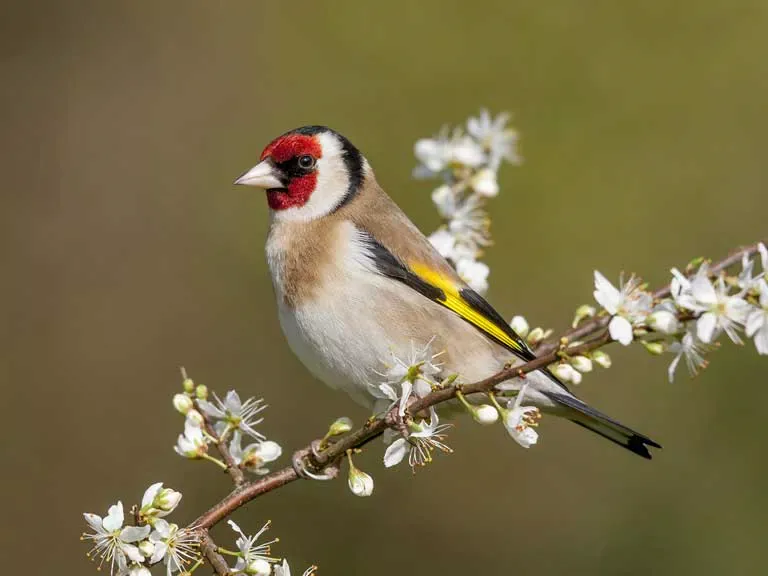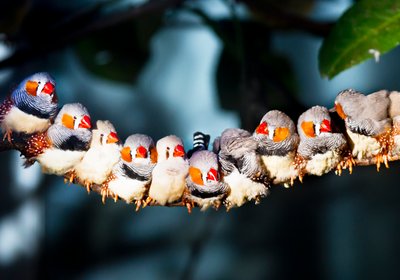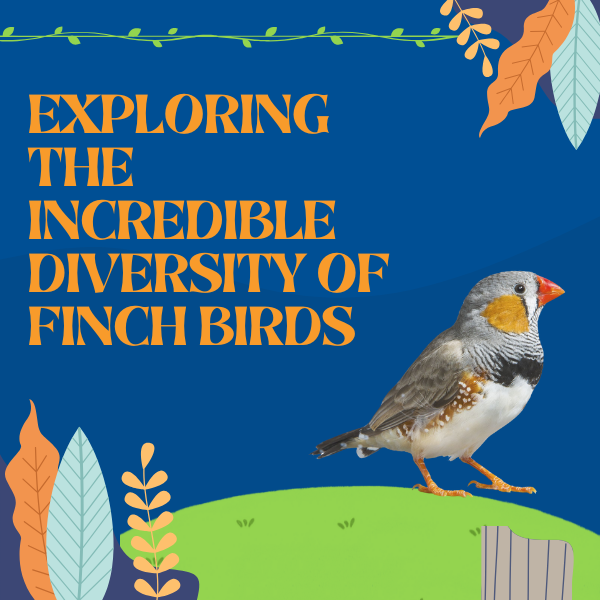If you’ve ever spent time outdoors, chances are you’ve heard the sweet, melodious tunes of a finch bird echoing through the trees. The songs and calls of finches are some of the most charming and varied sounds you can hear in the wild, adding a touch of magic to nature’s soundtrack. Whether you’re a birdwatching enthusiast, a pet finch owner, or just someone who enjoys the simple beauty of bird songs, understanding these little creatures’ vocalizations can be both fascinating and fun.
In this article, we’re going to dive into the world of finch bird songs and calls. We’ll talk about what makes them so special, how they communicate, and why these sounds are important for their survival. Let’s get started!

Why Finch Birds Sing: The Science Behind the Song
When you think about bird songs, you probably imagine beautiful melodies that fill the air during sunrise. But behind these songs lies a deeper purpose. Finch birds, like many other birds, sing for a few important reasons: to attract mates, mark territory, and communicate with others in their flock.
1. Attracting a Mate
One of the main reasons male finches sing is to show off to potential mates. Much like how a peacock displays its feathers, a male finch sings to demonstrate its health, vitality, and suitability as a partner. A finch’s song can tell a female everything she needs to know about his fitness. The more complex and varied his song, the better his chances are of impressing her.
2. Marking Territory
Birds are territorial creatures, and singing is a way to stake a claim on their space. A male finch will often sing from a high perch, loud and proud, to let other birds know that this is his territory. If another male bird tries to encroach, the song can act as a warning. It’s not just about defending their area — it’s about sending a clear message: “Stay away, this is my space!”
3. Communication
While songs are mainly associated with attracting mates and defending territory, calls are used for day-to-day communication. Finch birds have a range of calls that they use to communicate with their flock, whether it’s to signal the presence of food, warn of predators, or keep in touch with family members.
The Different Types of Finch Songs and Calls

Now that we know why finches sing, let’s break down the different kinds of songs and calls they make. Depending on the species of finch and the situation, their vocalizations can range from complex melodies to simple, sharp calls.
1. Song: The Musical Masterpiece
Finch songs are often melodic and can be quite varied depending on the species. Some finches have long, complex songs with a variety of notes, while others have short, repetitive tunes. Here are a few types of finch songs you might encounter:
- The American Goldfinch Song: American Goldfinches are known for their cheerful, lilting song, which is often described as sounding like a rhythmic, high-pitched “per-chic-o-ree.” The song is sweet and musical, especially during the breeding season. The male Goldfinch’s song is often heard in the early morning, as he tries to attract a mate.
- The House Finch Song: House Finches are one of the most common finches found in urban areas, and their song is a series of cheerful warbles. Males typically sing a long, varied tune that sounds like a mix of whistling, warbling, and twitters. They’re less melodious than some other finches but still charming in their own way.
- The Zebra Finch Song: Zebra Finches, native to Australia, have a more complex and varied song. Male Zebra Finches sing a series of rapid, choppy whistles and trills that sound almost like a machine gun going off. The song helps attract females and can be heard most often during the breeding season.
- The Red Crossbill Song: The Red Crossbill’s song is loud and somewhat jumbled. It consists of harsh, choppy notes that can sound more like squawking than singing. However, this song is an important part of how males communicate with females and claim territory.
2. Calls: Short and Sweet Communication
While songs are often long and melodious, calls are much shorter and serve a more immediate purpose. Finch calls are used for quick communication, whether to warn others about a predator or to alert the flock about food. Here are some types of calls you might hear from finches:
- Alarm Calls: When a finch detects a predator nearby — such as a hawk or a cat — it will emit a sharp, high-pitched alarm call to warn the rest of the flock. These calls are typically quick and loud, meant to grab the attention of nearby birds.
- Feeding Calls: When a finch finds food, it may emit a short, excited call to let others in the flock know about the discovery. These calls are usually rapid and repetitive.
- Contact Calls: These are short, soft calls used by finches to keep in touch with their flock members. It’s like saying “hey, I’m here” or “let’s stick together” during the day.
- Begging Calls: Baby finches, or chicks, have a distinctive begging call, often a high-pitched chirping sound. When they’re hungry, they’ll emit these calls to prompt their parents to bring food. These calls are usually heard in the nest, especially when the chicks are being fed.
Understanding Finch Vocalizations in the Wild

If you’re lucky enough to spot a finch in the wild, you’ll likely hear their songs and calls in action. But what do these vocalizations mean in the context of a finch’s daily life?
- Mating Season: During the mating season, you’ll hear the males singing loudly to attract females. They’ll often perform complex songs, trying to outdo other males in their area. You might even hear a “duet” from a mated pair — with the male singing and the female responding with calls. It’s nature’s version of a love song!
- Territorial Disputes: Male finches use their songs to defend their territory. If another male enters their space, the resident finch will sing even more loudly to assert dominance. If the intruder persists, the situation might escalate to a physical confrontation.
- Flock Communication: When finches are in a flock, their calls help them stay in touch with each other. Whether they’re moving from one food source to another, evading predators, or just staying close, their calls act as constant reminders of where they are and what’s happening.
How Finch Birds Learn Their Songs
Interestingly, finch birds don’t come out of the egg singing their songs. Just like humans, they learn their songs through a process known as “song learning.” Baby finches listen to their fathers and other adult males to learn the sounds they need to make. This learning process is critical for their survival and social integration.
Some species of finches are “hard-wired” with a specific song, meaning their songs are genetically programmed and not learned from others. However, most finches — like the well-known American Goldfinch — learn their songs through imitation. The younger finches go through a “critical period,” where they must hear the correct songs in order to imitate them accurately.
Why Finch Songs and Calls Matter to Us
Finch bird songs and calls do more than just add beauty to our environment — they also play an important role in the health of our ecosystem. As pollinators, finches contribute to the reproduction of many plants, and their vocalizations help maintain social structures within flocks. They also signal the health of their environment; changes in their songs or calls can indicate shifts in habitat quality, climate, or the presence of predators.
For birdwatchers and nature lovers, listening to finch songs is an opportunity to connect with nature in a meaningful way. It’s like receiving a greeting from the natural world, reminding us of the delicate balance that exists around us.
How You Can Attract Finch Birds and Enjoy Their Songs
If you love listening to finch bird songs and calls, why not try attracting them to your backyard or local green space? Finch birds are not only delightful to listen to, but they also bring a burst of color and energy to any outdoor setting. With a few simple steps, you can turn your garden into a finch-friendly haven, giving you the opportunity to enjoy their songs up close.
1. Providing the Right Food
Finches are primarily seed eaters, so the best way to attract them to your yard is by providing a variety of seeds that finches love. Sunflower seeds (especially the black oil variety), thistle (also known as nyjer) seeds, and dandelion seeds are among their favorites. Offering these seeds in a hanging bird feeder or a tube feeder designed for finches will make your space even more inviting. You can also try offering seed mixes specifically tailored for finches to make sure they have a balanced diet.
In addition to seeds, finches also enjoy fruits like apples and berries, so hanging these in a safe spot can draw them in. Just be sure to avoid feeding them bread or processed foods, which aren’t suitable for their health.
2. Creating a Safe Space with Water
Just like any other bird, finches need access to fresh water. Having a birdbath or shallow dish of water in your garden will not only keep the finches hydrated but also provide a spot for them to bathe. The sound of water splashing can be a soothing background to their songs, and it will certainly attract them, especially during hot weather when they need to cool off.
It’s important to make sure the water stays clean, as dirty water can attract parasites and bacteria, which could be harmful to the birds. Changing the water regularly is essential to maintaining a safe and healthy environment for them.
3. Adding Natural Shelter
Finches, like many other birds, enjoy having places to hide or rest. Planting trees, shrubs, and bushes around your garden can create natural shelter for finches to take refuge in. Dense foliage will provide safety from predators and a place to nest. Tall grasses are also great for giving them some privacy while they forage or when they are building their nests.
If you don’t have a lot of space for large plants, try planting native flowering plants that attract insects, which finches love to snack on. This will not only draw them in but also make your garden feel more alive and vibrant.
4. Installing a Finch-Specific Feeder
If you’re serious about attracting finches, consider investing in a specialized finch feeder. These feeders, often tube-style, are designed to accommodate the small beaks of finches. A mesh bag filled with thistle seeds is another great option that works well for attracting finches. These feeders are designed to be easy for finches to perch on and feed from, making them the ideal choice for your garden.
The added benefit of finch feeders is that they help prevent larger birds from hogging the seeds, as finches are smaller and better suited to these narrow, specialized feeders.
5. Be Patient and Observe
Attracting finches to your yard requires patience. These birds are cautious by nature, especially when they’re introduced to new environments. It may take some time before they start visiting regularly, but once they do, you’ll be rewarded with the beautiful sound of finch songs filling the air.
While you’re waiting, take the time to observe them. Pay attention to how they interact with their surroundings, how they use their songs to communicate, and how they look for food. You’ll start to notice the little details that make finches so fascinating, and their songs will take on even more meaning.
Finch Conservation: Protecting the Melody of the Wild
As much as we love their beautiful songs, finches face many challenges in the wild. Habitat loss, climate change, and predation by domestic animals are just a few of the threats that finches and other small birds face. Conservation efforts are important to ensure that future generations can continue to enjoy their songs.
If you want to support finch populations, consider the following:
1. Support Habitat Conservation
Conservation organizations often work to preserve and protect the habitats of finches and other songbirds. By donating to these causes, participating in local conservation projects, or advocating for protected areas, you can help ensure that finches have the safe spaces they need to live and breed.
2. Plant Native Plants
Planting native species of trees, flowers, and shrubs in your garden helps maintain the natural habitats that finches rely on. These plants not only provide food and shelter for finches but also support the entire ecosystem, creating a healthy environment for other wildlife as well.
3. Avoid Pesticides
Many finches feed on seeds and insects, and using pesticides can poison these food sources. By opting for natural pest control methods and reducing pesticide use, you help protect finches from harmful chemicals.
4. Educate Others
The more people know about the importance of protecting finches and their habitats, the better chance we have of making a positive change. Share your knowledge of finch songs, calls, and conservation efforts with friends and family. Encouraging others to observe and protect birds can create a ripple effect, ultimately leading to stronger support for wildlife preservation.
Enjoying the Music of Nature
Whether you’re a seasoned birdwatcher, a pet finch owner, or someone who simply loves the sound of nature, finch bird songs and calls are a joy to hear. These little creatures may be small in size, but their voices are powerful, complex, and full of life. Next time you hear a finch singing, take a moment to appreciate the symphony they’re creating — a sound that’s been echoing through the trees for centuries.
By understanding their songs and calls, you can better appreciate the role that finches play in the natural world. From helping us understand their behavior to enhancing our connection with the environment, these vocalizations remind us that there’s more to nature than meets the eye.
Final Thoughts: A Tune That Stays in Your Heart
Finch bird songs and calls are more than just a beautiful sound — they’re an expression of life, love, and survival in the wild. These delightful creatures add something truly special to our world, offering not only a sensory experience but also a deeper connection to nature. Whether you’re enjoying their songs in your backyard, out in the wild, or in the comfort of your home with a pet finch, the melodies they create are a reminder of the intricate beauty of life that surrounds us.
By providing them with a safe, welcoming environment and supporting their conservation, you can help ensure that future generations will continue to hear the sweet, lilting songs of the finch — a sound that will forever echo in the hearts of nature lovers everywhere.
So next time you hear the distinctive chirp of a finch, take a moment to pause and appreciate the intricate, joyful music that nature has to offer. It’s not just a bird song; it’s a melody that binds us to the natural world and reminds us of its wonders.

